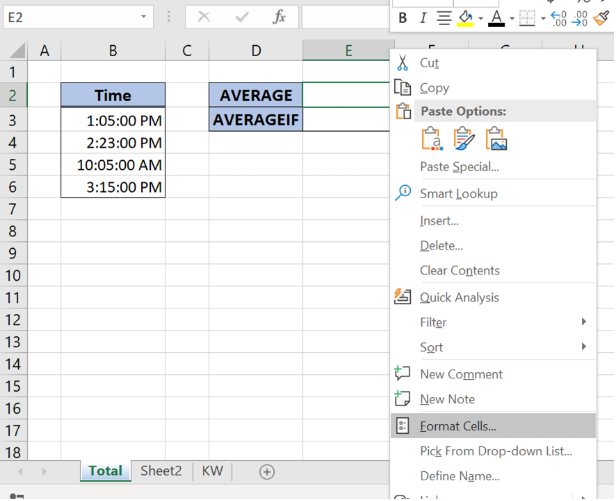
- CALCULATE DURATION IN HOURS AND MINUTES IN EXCEL 2016 FOR MAC HOW TO
- CALCULATE DURATION IN HOURS AND MINUTES IN EXCEL 2016 FOR MAC SERIES
In this case the only viable option would be to break the vertical axis and have the totals start at some value larger than 0. However, users (and their bosses) are sometimes more interested in contributions than in totals and the relationship between the two. This visualization is also completely in line with IBCS Standards. Our 2016 result is essentially the same as our 2015 result. This is also apparent in our example (see image above).įirst, a point of order: this chart correctly visualizes the situation as the contributions really ARE that small compared to totals.
CALCULATE DURATION IN HOURS AND MINUTES IN EXCEL 2016 FOR MAC SERIES
To create a waterfall chart in Excel 2013 and earlier, you had to define additional data series (with complicated formulas) in the data table and then make them invisible in the chart.Īnd we're not talking about 1 invisible series. That's right - you did not insert a waterfall chart, you created it. Note that I used the word "creating" and not "inserting".

CALCULATE DURATION IN HOURS AND MINUTES IN EXCEL 2016 FOR MAC HOW TO
How to create a waterfall chart in Excelīefore Office 2016 creating waterfall charts in Excel was a notoriously difficult process. For example, you might want to use Net revenue and Gross Income as two checkpoints between Gross Revenue and Net income starting and ending values. Tip: While the most typical waterfall chart is the one with a starting and ending value, you can also create subtotals as visual milestones in the series. In a nutshell, use a waterfall chart whenever you want to show how a starting value increases or decreases through a series of positive or negative changes.

Some people like to connect the lines between the contributions to make the chart look like a bridge (giving us the bridge chart name), while others leave the columns floating. Note: Other fun names for waterfall charts include Mario chart and flying bricks chart, because individual chart elements resemble an old arcade game. The floating columns between them are the contributing positive or negative values. In a waterfall chart, the first column is the starting value and the last column is the end value. In other words, it's an ideal way to visualize a starting value, the positive and negative changes made to that value, and the resulting end value. A waterfall chart (also known as a cascade chart or a bridge chart) is a special kind of chart that illustrates how positive or negative values in a data series contribute to the total.


 0 kommentar(er)
0 kommentar(er)
